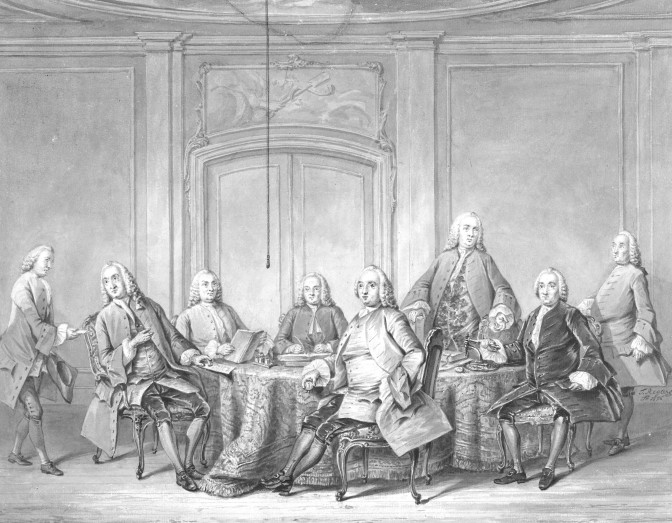A gilde was a guild, an organization of people of the same occupation in a certain town or region. Guilds were since the Middle Ages and some of them continued to operate until around 1800, when the French made an end to their monopolies.
Most guilds had rules about admittance and training. Apprentices or gezellen could only become full members (masters) after years of training and passing a master’s test.
Guilds were especially powerful in larger towns, where guilds held privileges which gave them a monopoly on that particular occupation or trade. Amsterdam, for example, had 51 guilds in 1760, ranging from a tailors’ guild organized in 1348 to a wood-saw-millers’ guild organized in 1698. In smaller towns, there usually weren’t any guilds, or only for the most popular occupations.
Guild records can provide information about your ancestors’ occupation and family relations. Often, sons of guild members had to pay a lower admittance fee, so the admittance records can sometimes provide evidence of your ancestors. Guild records provide a wealth of information about the guild’s dealings, such as petitions, complaints about guild members, pension funds, elections and lists of board members.

Regents of the surgeons’ guild in Amsterdam, 1756. Credits: Tibout Regters, collection Rijksmuseum (Public Domain)


My great-great grandfather, Heinrich Johann Joseph Geuer (1841-1904) was a German stained-glass painter who was invited by an important Catholic named Gerardus van Heukelum to settle in Utrecht in 1871. Heukelum was the leader of the “St. Bernulphusgild” an important Catholic guild that time (mainly because of the reestablishment of the Utrecht Diocese some years before). A couple of years after his establishment in Utrecht, Heinrich Geuer became a notable member of this guild, until his death. This fact (become a guild member) was so important and helpful for my researches, because I’ve been able to find a plenty of informations and even some photos of my ancestor with his guild colleagues. By the way, the stained-glass painter occupation still active in the Geuer family through 3 and 4 generations after Heinrich, what includes me.
Hello Yvette,
Is there some website where we can search for guild membership and records?
Thank you,
Susan